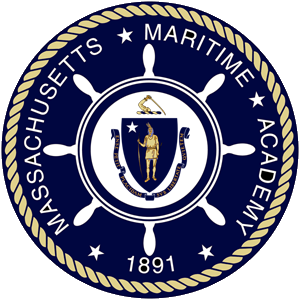RFPEW Task 3.1.F
Assist preparing a main-propulsion boiler for light-off
MMA Method
In order to satisfy NVIC 07-14 Task 3.1.F , MMA students must:
- Successfully complete MMA Assessment OICEW-4-1D Monitor engineering machinery
NVIC Method
See NVIC method.
| STCW Competence |
Knowledge, Understanding, and Proficiency |
|
For keeping a safe boiler watch: Maintain the correct water levels and steam pressures
|
RFPEW-A2.1 Safe operation of boilers
|
| Condition | Behavior | Standard |
|---|
|
On a steam vessel, on a simulator, or in a laboratory,
|
the candidate assists in preparing a main propulsion boiler for light-off.
|
The candidate:
- Visually inspects the boiler to ensure that boiler firesides and watersides are properly closed up and that all manholes, handholes, and access plates are properly secured;
- Checks for and wipe up any oil accumulations in the furnace or air casing;
- Checks closed bottom and surface blow valves; waterwall and economizer header drain valves; chemical feed and main and auxiliary feed stop check valves; main and auxiliary and soot blower steam stop valves, and the gauge glass drain valve;
- Checks open the steam drum atmospheric vent valve; superheater drain and vent valves; gauge glass cutoff valves; instrument and gauge root valves; and the feedwater stop valves;
- Vents the economizer;
- Brings the boiler water level to one inch from the bottom of the gauge glass, filling or draining the boiler as necessary and making sure to verify the ability to feed the boiler;
- Blows down the boiler water level gauge glass to insure accuracy;
- Visually inspects the boiler and checks for water leaks;
- Eases of on all steam stop valves and re-closes them hand tight;
- Inspects and cleans all fuel oil strainers and ensure atomizers are made up with clean tips;
- Ensures the air register doors operate freely;
- Ensures that all operations are in accordance with manufacturer’s recommended procedures; and
- Takes proper action to prevent safety and pollution violations.
|
